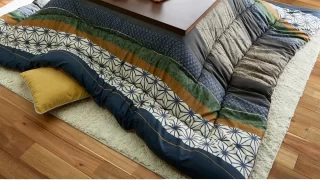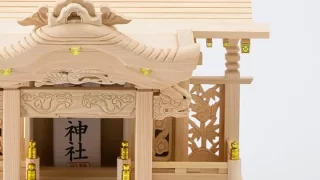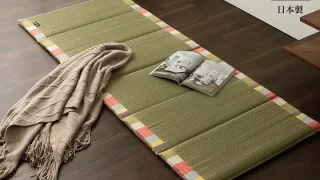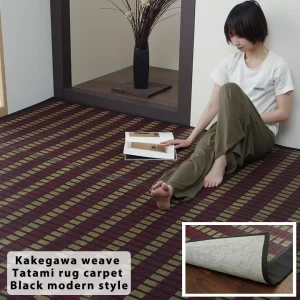What are Japanese Prayer beads?
Prayer beads are called "Juzu" and are widely spread throughout Japan.
It is also called Nenju because it is used to count the number of Buddhist sutras and nembutsu chanting.
It is said that by holding prayer beads and putting your hands together in prayer, you will connect with the Buddha, get rid of worldly desires, and gain merit.
Prayer beads are talismans that protect the owner and are the only Buddhist tools that show the connection with Buddha.
Contents
- 1 About Juzu (Prayer beads) and Nenju (Prayer beads)
- 2 What does it mean to have Juzu (Prayer beads) and Nenju (Prayer beads)?
- 3 Birth of Juzu (Prayer beads) and Nenju (Prayer beads)
- 4 Number of beads
- 5 Composition of Juzu (Prayer beads) and Nenju (Prayer beads)
- 6 The meaning of each part of the prayer beads
- 7 Materials used for Juzu (Prayer beads) and Nenju (Prayer beads)
- 8 Prayer beads for men and Prayer beads for women
- 9 Prayer beads Tassel
- 10 If the string of Juzu (Prayer beads) breaks…
About Juzu (Prayer beads) and Nenju (Prayer beads)

■ Let's understand the true meaning of Prayer beads
Prayer beads are said to be a talisman if you always wear them.
By putting your hand through the circle of Prayer beads, it is an important Buddhist tool that will serve as a bridge between you and the world of Buddhas and Bodhisattvas.
■Handle Prayer beads with care
It is said that by holding Prayer beads, you will receive myoga (myoga: thanks to gods and buddhas) that protects you. Please treat it carefully as your own amulet.
■ Are Prayer Beads OK to borrow?
Prayer beads are said to bring a bond between the owner and the Buddha.
Also, by using Prayer beads, the owner's thoughts are transferred. In other words, Prayer beads are the alter ego of the owner,
We encourage each person to bring their own. Prayer beads are said to be the only Buddhist tools that individuals have.
■ Do you mean that the string of Prayer beads will break?
Originally, it was made by connecting the same number of balls as the number of human worldly desires (108), so breaking the string that connects them is said to be a manifestation of the breaking of bad fate.
However, nowadays, the materials used are of good quality, so the string is difficult to break.
Also, if the string of the Prayer beads is broken, we recommend that you purchase a new one as a milestone in your life.
■ Be sure to hang Prayer beads on your hands when praying.
Worshiping with bare hands is the same as grabbing the Buddha.
It is also said that by putting your hand through the circle of Prayer beads, you will be connected to the Pure Land world.
What does it mean to have Juzu (Prayer beads) and Nenju (Prayer beads)?
It is said that humans have one hundred and eight worldly desires. Each prayer beads is said to be the Buddha who controls one hundred and eight worldly desires, so the rosary will take care of all human worldly desires.
Since ancient times, it has also been used as a talisman to ward off evil.
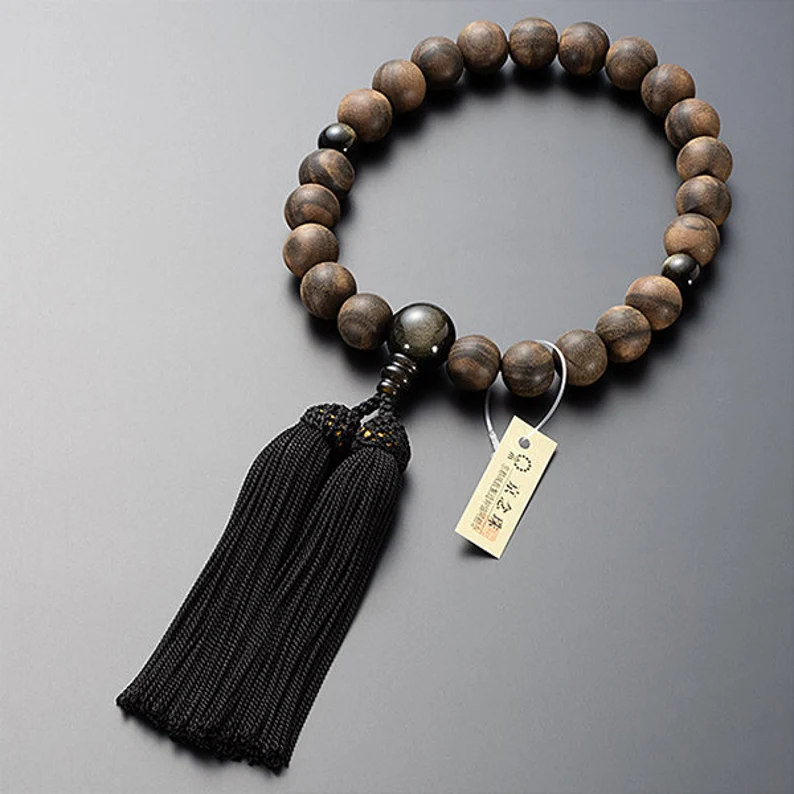
Birth of Juzu (Prayer beads) and Nenju (Prayer beads)
There are various theories about the origin of Juzu (Prayer beads). According to one theory, the birthplace is India, and it is said that it started with the advice of Buddha.
At that time in India, when a king who was worried about his life asked for advice on how to get rid of worldly desires, he replied, "Make a circle by connecting 108 soapberry fruits, and while chanting Buddhism, By picking up the fruits one by one, the worldly desires will disappear.”
After that, various sects were born in the flow of Buddhism propagation, and it is said that it was introduced to Japan via China in the Kamakura period.
Number of beads
The official Juzu (Prayer beads) of many denominations consist of 108 beads. As is also known for the number of New Year's bells, 108 balls represent the number of people's worldly desires and are considered to be the number with the greatest merit.
Currently, there is no limit on the number of Prayer beads, and "informal Prayer beads", whose number is determined according to the size, are also widely used.
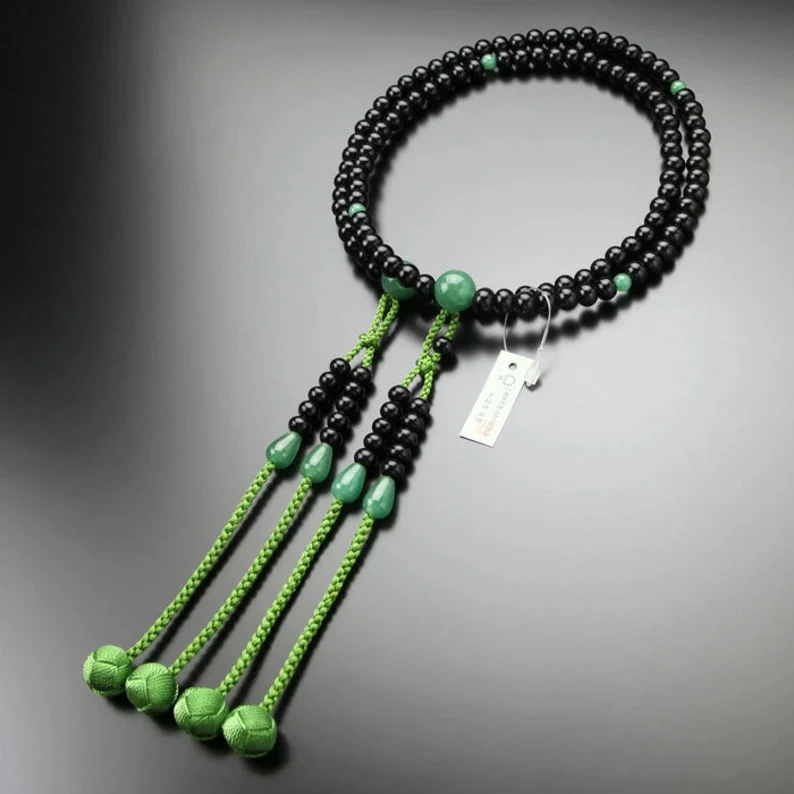
Composition of Juzu (Prayer beads) and Nenju (Prayer beads)
Formal prayer beads and rosary beads are made up of parts called Oyadama (big beads), Omodama (main beads), Shitentama (abbreviated as Nitentama (small beads), Deshidama, Tsuyudama, Jomyodama, and an inner string. composed and each has a meaning.
The meaning of each part of the prayer beads
Each part of the prayer beads has a meaning based on the teachings of Buddhism.
Oyadama: The tufted ball in the center of the Prayer beads. Represents “Shaka Nyorai” and “Amida Nyorai”.
Omodama: 108 beads. "Hyakuhachison" represents "the worldly desires of the one hundred and eight".
Shitentama: Four balls between Omodama and Omodama. Represents the "Four Heavenly Kings" and "Four Bodhisattvas". Two (Nitentama) for informal prayer beads.
Deshidama: 20 small balls attached to the tassel (40 for Nichiren sect only). "Ten Great Disciples and Ten Paramitsu" Represents "Ten Great Disciples and Ten Bodhisattvas".
Tsuyudama: A dew-shaped ball that lands under the Deshidama. A ball to fasten Deshidama.
Jomyodama: The ball at the top of the tassel, below the Oyadama. Represents Bodhisattva.
String through the middle: A string that connects the beads that form the ring of the prayer beads. It represents Kannon Bodhisattva.

Materials used for Juzu (Prayer beads) and Nenju (Prayer beads)
Nuts: Vajra Bodhi Tree, Dragon Eye Bodhi Tree, Star Moon Bodhi Tree, Phoenix Bodhi Tree, Tenjiku Bodhi Tree, etc.
Natural stones: crystal, agate, jade, tiger's eye, garnet, chalcedony, lapis lazuli, etc. Among them, "crystal" prayer beads are said to have "hundred billion times fortune" and are standard parts of prayer beads.
Fragrant wood: There are agarwood, kyara, sandalwood, etc., but these days they are very rare and difficult to obtain.
Trees: Cherry blossoms, peaches, plums, rosewood, ebony, striped ebony, iron sword trees, and the tree of life, etc., but they are becoming increasingly difficult to obtain.
Others: There are ivory, amber, coral, and pearls, but they are rare. These days, you can also see glass and plastic balls.
Prayer beads for men and Prayer beads for women
Prayer beads are divided into men's and women's.
For men, larger beads are used than Prayer beads for women. For women, the beads are smaller than the men's Prayer beads, and they are often colored with bright and beautiful clusters to match the ball color.
Also, basically there are no unisex Prayer Beads, but there are some that are gender-neutral for children.
Prayer beads Tassel
Tassel shape; There are four main types.
・Tassel with head
・String Tassel
・Cut Tassel
・Bonten Tassel
Tassel materials include pure silk and rayon.
Pure silk is pure natural silk = silk.
Rayon is a synthetic fiber.
Naturally, the pure silk Tassel is more luxurious. In addition, silk has a better texture and has a unique luster and suppleness.
A good Tassel is not cut one by one, but is twisted and processed so that the threads do not unravel.
The shape and color of the tassel vary depending on the sect, and each has its own meaning.
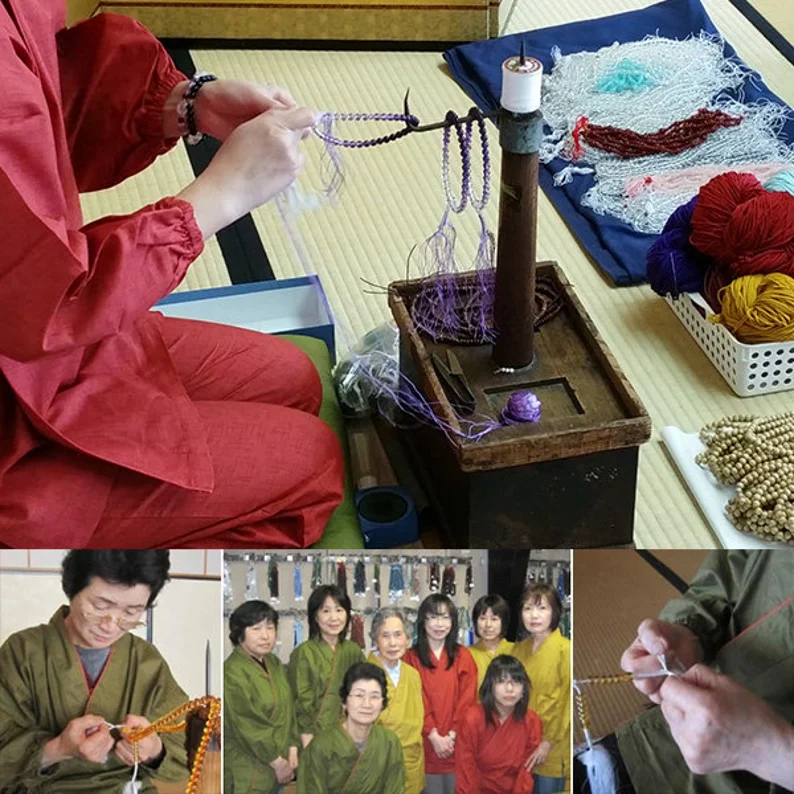
If the string of Juzu (Prayer beads) breaks…
If the string of Juzu (Prayer beads) breaks, something bad will happen. There are people who are worried about it.
However, if the string of Juzu (Prayer beads) is cut, it is better to consider that the Buddha cut off the bad relationship.


